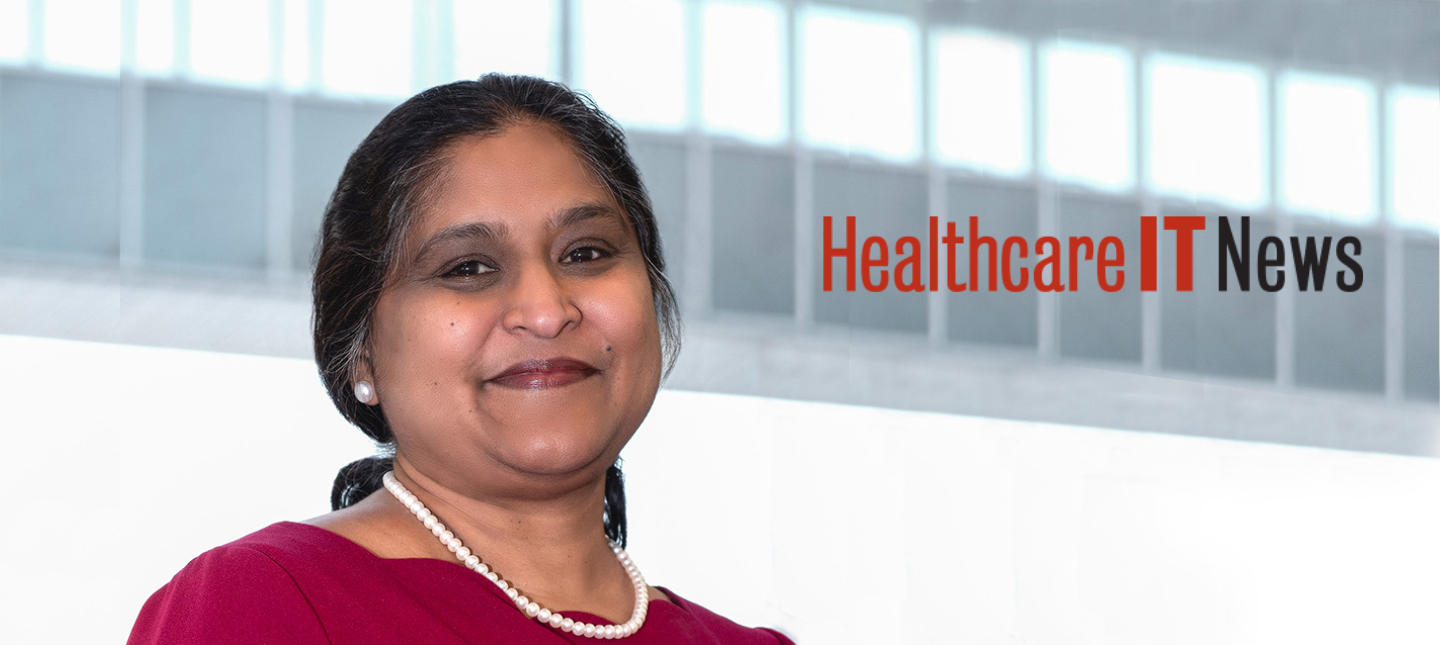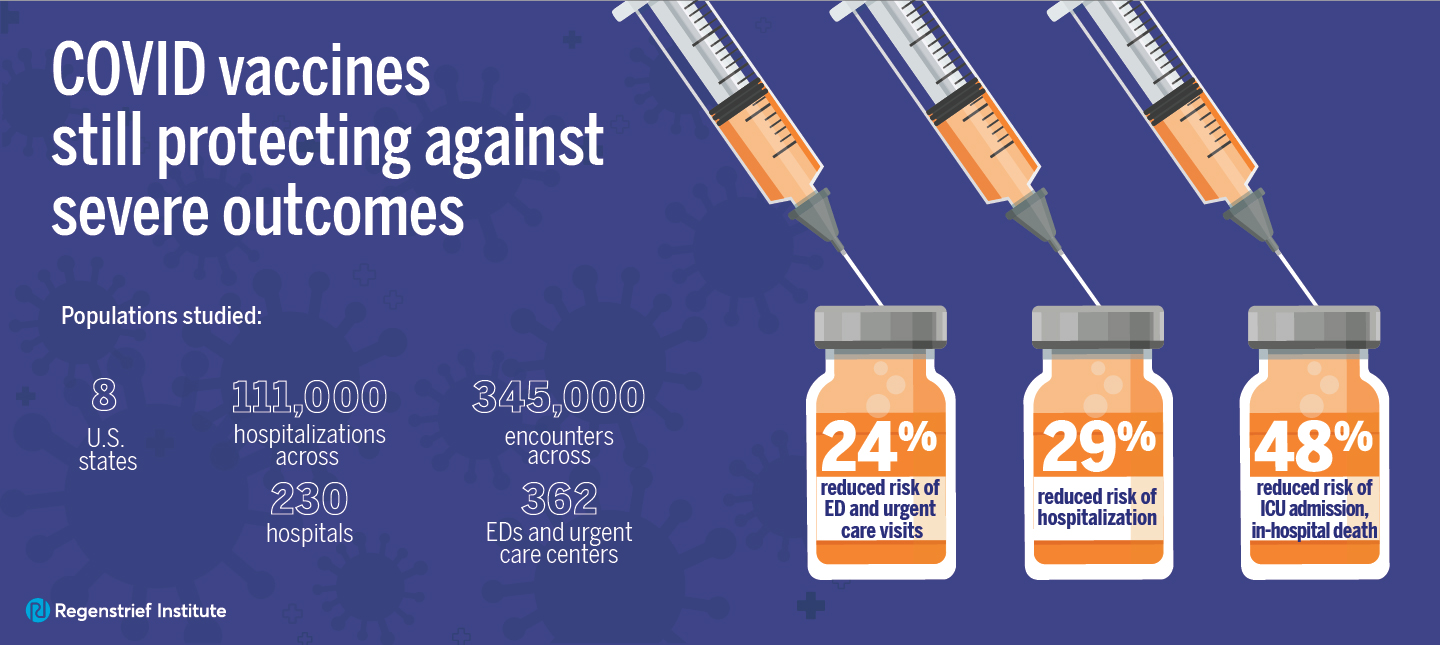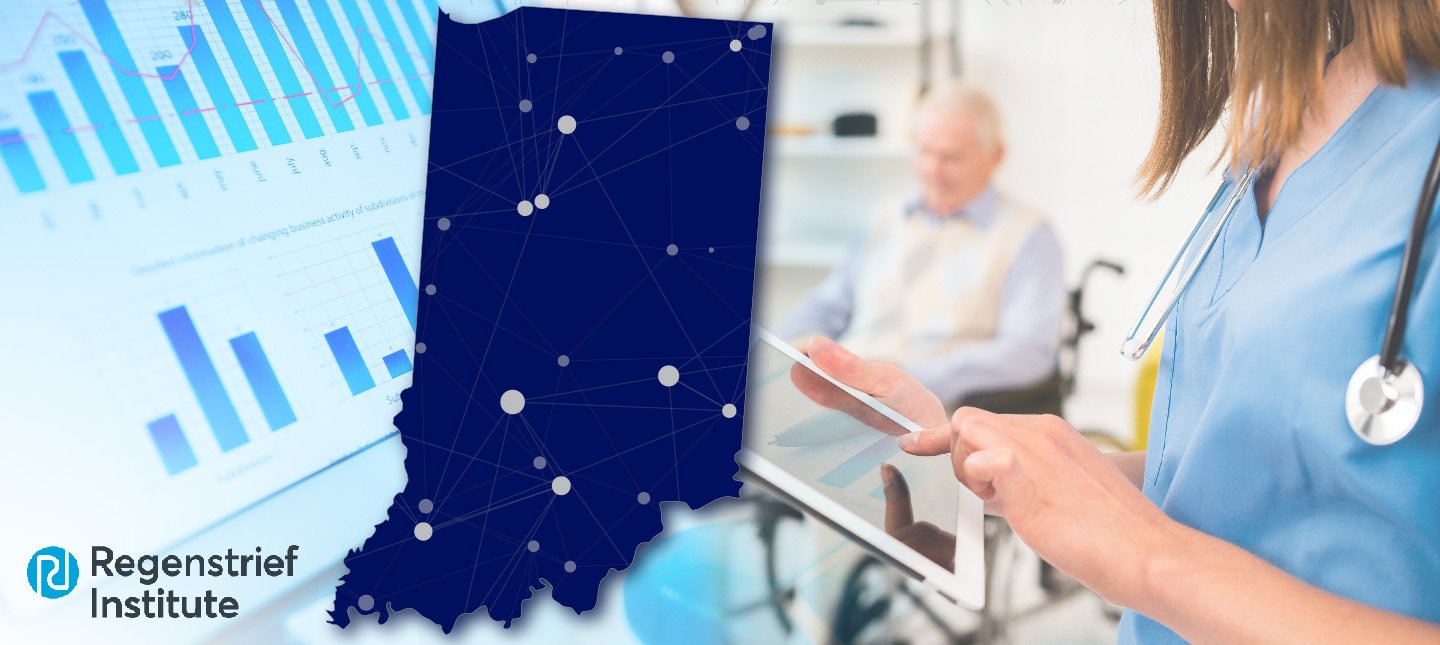As cases of COVID-19 spread throughout Indiana, state leaders have been working closely with Regenstrief Institute in the efforts to contain the outbreak. Partnerships have provided data and analysis to inform statewide policies as well as strengthen preparedness in Hoosier nursing homes.
Sharing data
Through a data-sharing collaboration, Regenstrief led the development of a COVID-19 dashboard that complements the State’s data. The dashboard displays information from a number of sources, including hospitals and clinics connected to the Indiana Network for Patient Care, managed by the Indiana Health Information Exchange. The interactive tool displays statistics on COVID-19 emergency department visits, hospital stays, demographics, comorbidities and more and allows users to break down the data for individual counties.
Other partners in this initiative are the Indiana State Department of Health, Indiana Family Social Services Administration, Indiana Management Performance Hub, Indiana Health Information Exchange, Indiana University Richard M. Fairbanks School of Public Health and Indiana University School of Medicine.
This information provides Indiana leaders with a wider perspective on the impact of the COVID-19 pandemic throughout the state. Regenstrief research scientists regularly meet with State Health Department officials to discuss trends and implications of the dashboard data.
Testing for population prevalence
The State Department of Health has teamed up with the Indiana University Richard M. Fairbanks School of Public Health at IUPUI to test Hoosiers to determine the population prevalence of COVID-19. The project is being led by Nir Menachemi, PhD, MPH, who is a Regenstrief research scientist in addition to a department head at the Fairbanks School of Public Health.
The study involves random sample testing for the novel coronavirus in Hoosiers. The data will allow experts to understand the presence of the virus in the general population, not just people who seek out testing.
The first phase of data showed a prevalence of 2.8 percent. This estimate enabled scientists to calculate infection-fatality rates, among other measures, and identify which communities have been more affected. The study includes three more phases of testing, with the goal of testing nearly 20,000 Hoosiers.
Dr. Menachemi said the preliminary data suggests that physical-distancing policies have helped slow the spread. The study data will be used to inform future policy decisions.
Training nursing home staff
Adults living in nursing homes or long-term care facilities are especially at risk for serious complications from COVID-19. The Indiana State Department of Health teamed up with Probari to help minimize the risk to both staff and residents in these environments.
Probari was founded by Regenstrief research scientist and Indiana University School of Medicine assistant professor Kathleen Unroe, M.D., MHA. The institute also has a stake in the company. Probari’s mission is to improve the overall health care experience at nursing homes.
Probari staff are working alongside State Department of Health employees to provide training and support to more than 500 nursing homes in Indiana. The specialists are making sure facility staff are up to date on the latest COVID-19 guidance from public health authorities and training workers in infectious disease control and prevention.









